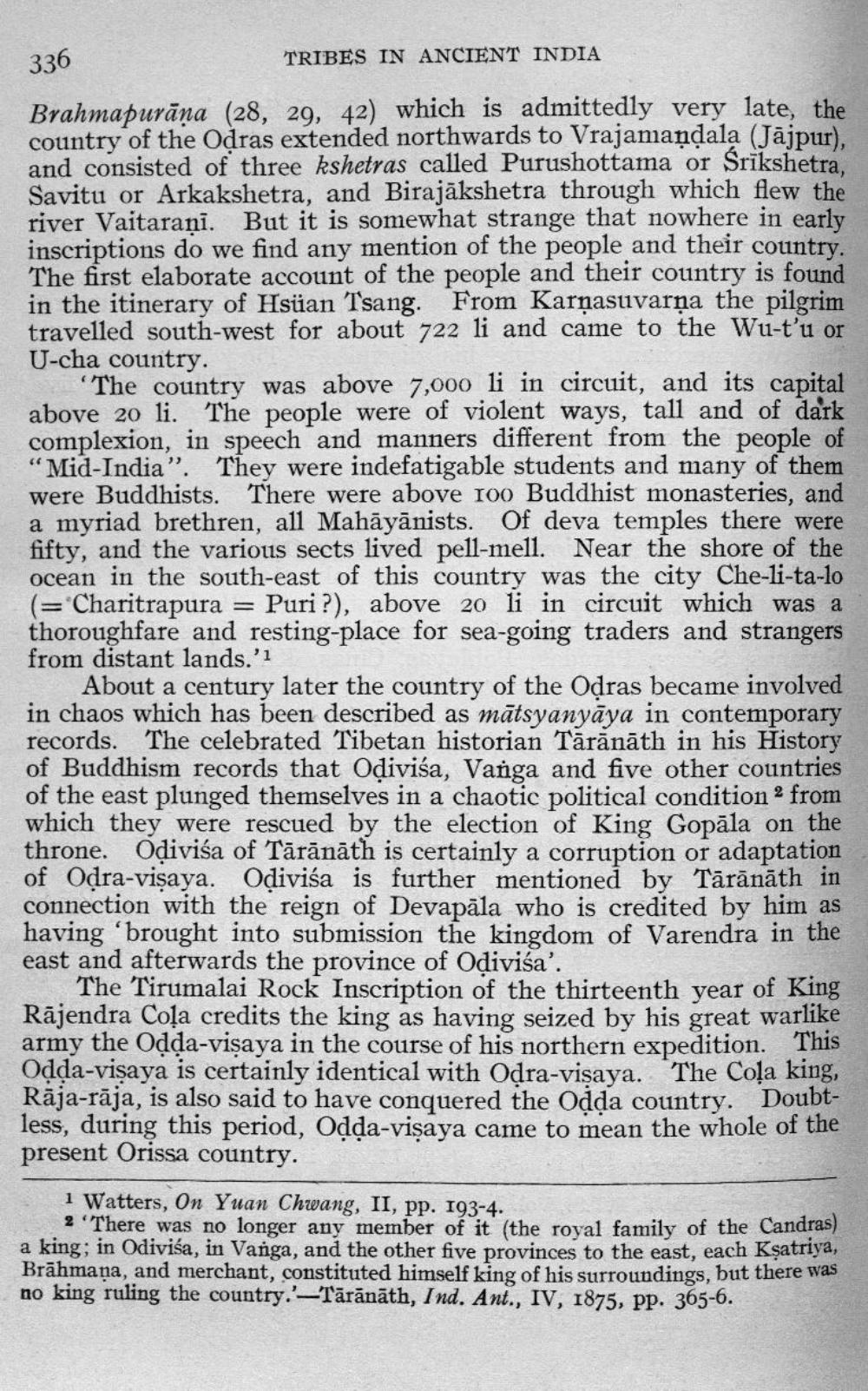________________
336
TRIBES IN ANCIENT INDIA
Brahmapurāna (28, 29, 42) which is admittedly very late, the country of the Odras extended northwards to Vrajamandala (Jājpur). and consisted of three kshetras called Purushottama or Srikshetra. Savitu or Arkakshetra, and Birajākshetra through which flew the river Vaitaraņi. But it is somewhat strange that nowhere in early inscriptions do we find any mention of the people and their country. The first elaborate account of the people and their country is found in the itinerary of Hsüan Tsang. From Karnasuvarņa the pilgrim travelled south-west for about 722 li and came to the Wu-t'u or U-cha country.
"The country was above 7,000 li in circuit, and its capital above 20 li. The people were of violent ways, tall and of dark complexion, in speech and manners different from the people of "Mid-India". They were indefatigable students and many of them were Buddhists. There were above roo Buddhist monasteries, and a myriad brethren, all Mahāyānists. Of deva temples there were fifty, and the various sects lived pell-mell. Near the shore of the ocean in the south-east of this country was the city Che-li-ta-lo (= Charitrapura = Puri?), above 20 li in circuit which was a thoroughfare and resting-place for sea-going traders and strangers from distant lands.'1
About a century later the country of the Odras became involved in chaos which has been described as mātsyanyāya in contemporary records. The celebrated Tibetan historian Tārānāth in his History of Buddhism records that Odivisa, Vanga and five other countries of the east plunged themselves in a chaotic political condition 2 from which they were rescued by the election of King Gopāla on the throne. Odivisa of Tārānāth is certainly a corruption or adaptation of Odra-visaya. Odivisa is further mentioned by Tārānāth in connection with the reign of Devapāla who is credited by him as having ‘brought into submission the kingdom of Varendra in the east and afterwards the province of Odivisa'.
The Tirumalai Rock Inscription of the thirteenth year of King Rajendra Coļa credits the king as having seized by his great warlike army the Odda-visaya in the course of his northern expedition. This Odda-visaya is certainly identical with Odra-visaya. The Coļa king, Rāja-rāja, is also said to have conquered the Odda country. Doubtless, during this period, Odda-visaya came to mean the whole of the present Orissa country.
1 Watters, On Yuan Chwang, II, pp. 193-4.
2 There was no longer any member of it (the royal family of a king; in Odivisa, in Vanga, and the other five provinces to the east, each Ksatriya, Brāhmana, and merchant, constituted himself king of his surroundings, but there was no king ruling the country'-Tārānāth, Ind. Ant., IV, 1875, pp. 365-6.




